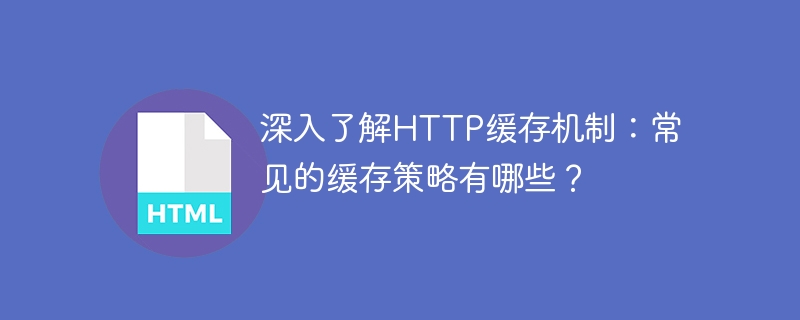

In-depth understanding of HTTP caching mechanism: What are the common caching strategies?
Introduction:
With the rapid development of the Internet, web page loading speed has become one of the important indicators of user experience. In order to optimize the loading speed of web pages and reduce bandwidth consumption and server pressure, the HTTP caching mechanism has become an indispensable part. In Internet technology, caching is a technology that temporarily stores data in temporary storage to improve access speed. This article will delve into the principles of the HTTP caching mechanism and introduce common caching strategies.
1. Principle of HTTP caching mechanism:
The HTTP caching mechanism is based on the agreement between the client and the server and improves performance by storing and reusing previously obtained resources. When the browser sends a request to the server, the server will return the corresponding resources, such as HTML, CSS, JavaScript, images, etc. These resources can be cached by the browser so that they can be reused on subsequent requests. When the browser requests the same resource again, it first checks the cache. If the resource has been cached and has not expired, the browser will fetch the resource directly from the cache without having to make another request to the server, thus increasing loading speed.
2. Common caching strategies:
Conclusion:
HTTP caching mechanism plays an important role in improving web page loading speed, reducing network traffic and server pressure. Common caching strategies include forced caching, comparison caching, manual refresh, CDN caching, dynamic caching, etc. Developers can reasonably select and configure caching strategies according to specific application scenarios, thereby improving user access experience.
The above is the detailed content of Research on HTTP caching mechanism: What are the commonly used caching strategies?. For more information, please follow other related articles on the PHP Chinese website!
 Solution to Win7 folder properties not sharing tab page
Solution to Win7 folder properties not sharing tab page
 what is vuex
what is vuex
 How to clean the computer's C drive that is too full
How to clean the computer's C drive that is too full
 Mathematical modeling software
Mathematical modeling software
 The difference between vscode and vs
The difference between vscode and vs
 How to type the inscription on the coin circle?
How to type the inscription on the coin circle?
 How to decrypt bitlocker encryption
How to decrypt bitlocker encryption
 How to solve the slow download problem of Baidu Netdisk
How to solve the slow download problem of Baidu Netdisk




